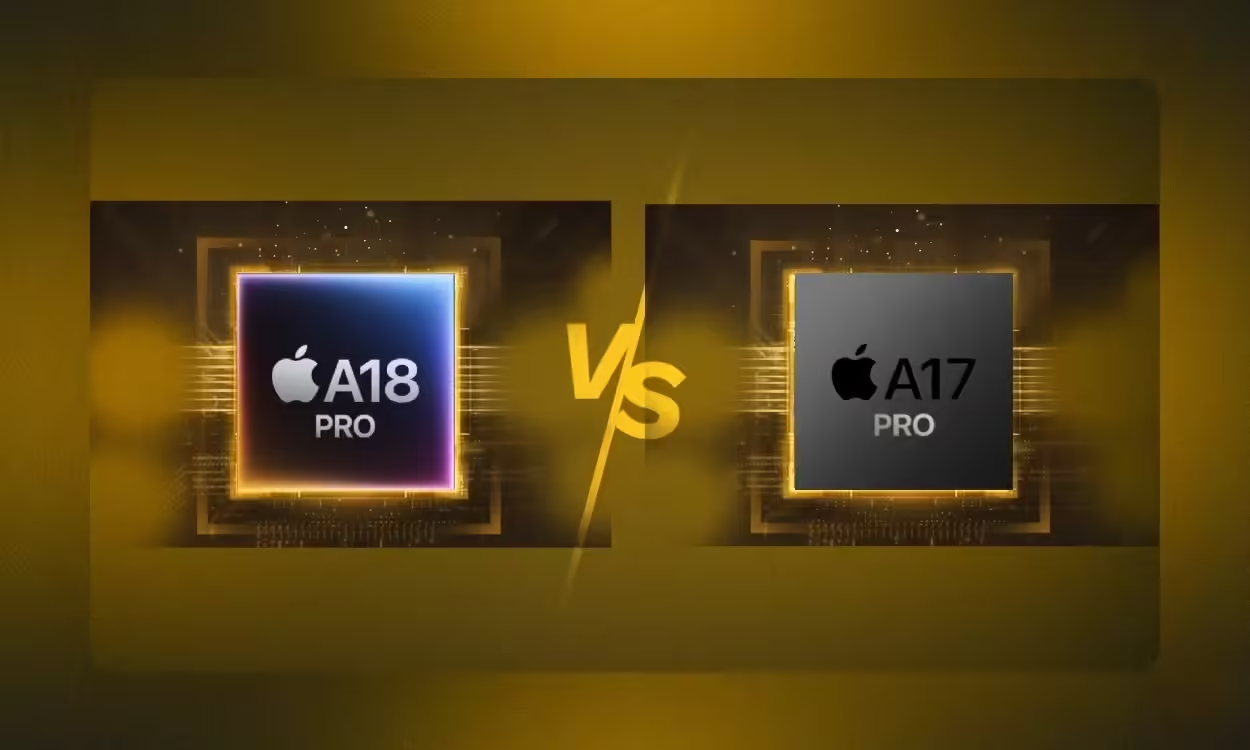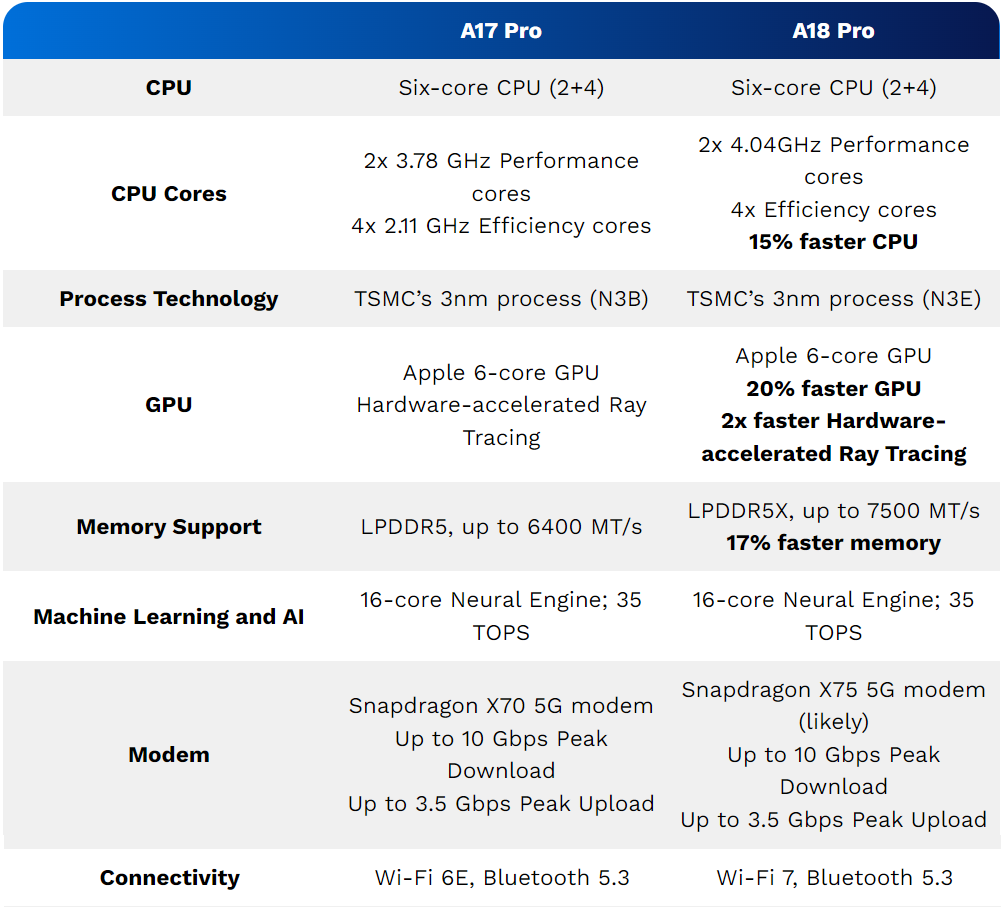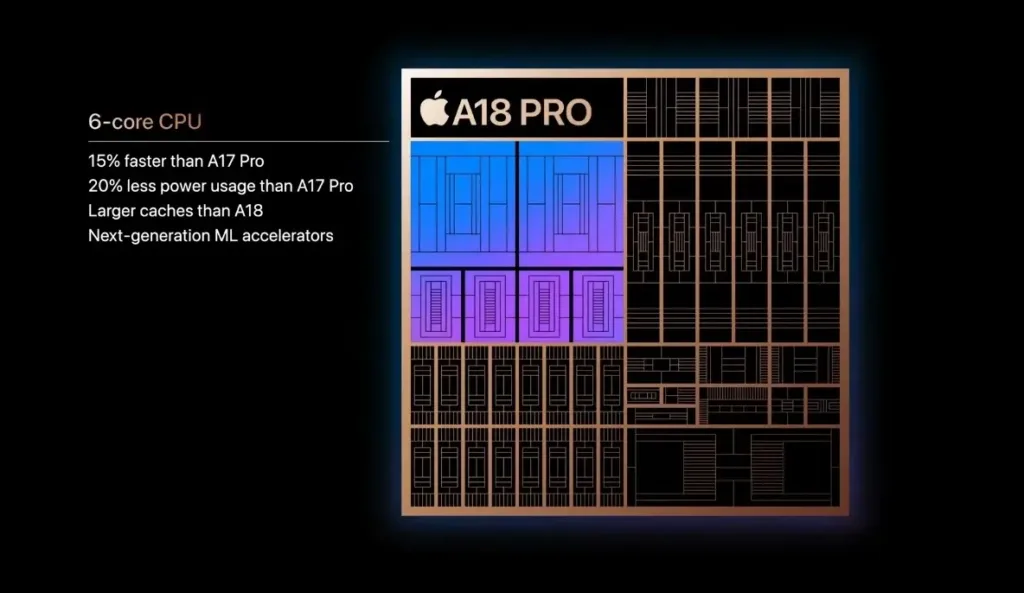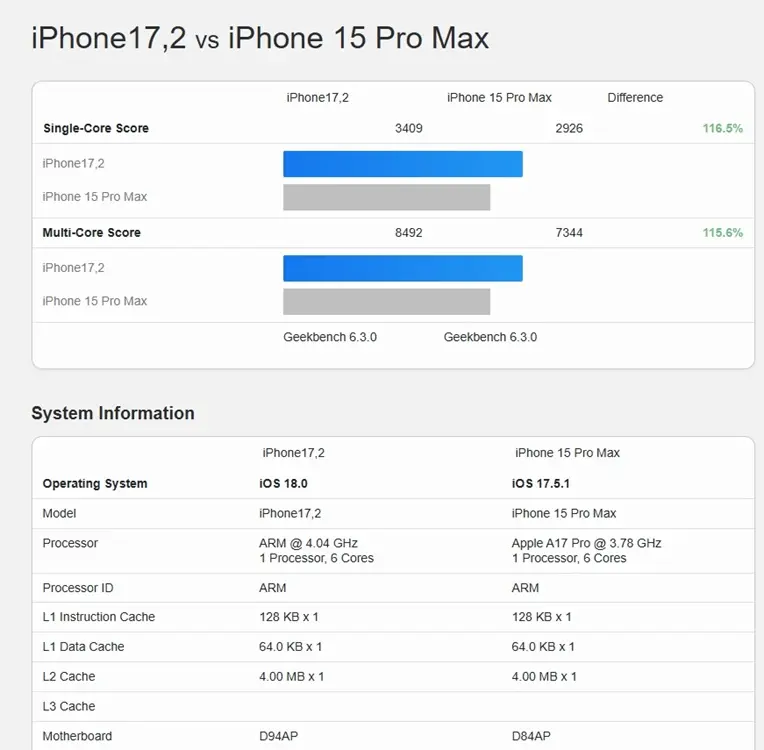
The newly launched iPhone 16 Pro series is powered by Apple’s latest A18 Pro chipset, which Apple claims is the most powerful mobile processor in the world. Built on TSMC’s enhanced N3E process node, the A18 Pro features an updated CPU. But what improvements does it bring over its predecessor, the A17 Pro? To answer that, we’ve compared the A17 Pro and A18 Pro chipsets, focusing on their CPU, GPU, and Neural Engine performance.
A17 Pro vs A18 Pro: Specifications

A17 Pro vs A18 Pro: CPU
Starting with the CPU, the Apple A18 Pro is built on TSMC’s second-generation 3nm process node, known as N3E. The A18 Pro features six CPU cores, including two performance cores that can reach an impressive 4.04GHz frequency, a first for a mobile chipset. It also includes four efficiency cores for improved power management.

A key highlight of the A18 Pro is Apple’s implementation of the Armv9.2 architecture. While it lacks SVE (Scalable Vector Extensions) support for high-computing tasks, the A18 Pro introduces two SME (Scalable Matrix Extension) units, designed to enhance AI and machine learning performance. Apple refers to these as ML accelerators.
In comparison, last year’s A17 Pro was built on TSMC’s first-generation 3nm (N3B) process node and featured the same six-core CPU setup. Its two performance cores reached up to 3.78GHz, while the four efficiency cores could boost up to 2.11GHz.

Overall, Apple asserts that the A18 Pro CPU is 15% faster than the A17 Pro and 20% more power-efficient. In Geekbench benchmarks, the A18 Pro achieved a score of 3,409 in single-core and 8,492 in multi-core tests, showing a performance boost of approximately 15% over the A17 Pro.
A17 Pro vs A18 Pro: GPU
Turning to the GPU, Apple hasn’t made significant changes to the GPU microarchitecture in the A18 Pro. The 6-core GPU remains largely similar to last year’s model, with the key difference being an increase in GPU frequency. Additionally, the faster LPDDR5X memory, which runs at 7500 MT/s and provides 17% faster memory speed, enhances the GPU’s overall graphics performance.

Additionally, the new aluminum internal frame and thermal substructure will allow the GPU to maintain peak performance for longer periods. According to Apple, the 6-core GPU in the A18 Pro delivers 20% faster graphics performance compared to the A17 Pro’s 6-core GPU. Additionally, hardware-accelerated Ray Tracing is now twice as fast as it was on the A17 Pro.
A17 Pro vs A18 Pro: Neural Engine

Regarding the Neural Engine, Apple states that the 16-core Neural Engine in both the A18 Pro and A17 Pro can handle up to 35 TOPS (trillion operations per second). There are no changes to the Neural Engine in the iPhone 16 Pro and 16 Pro Max. However, with 17% faster memory, the Neural Engine benefits from improved performance in AI and machine learning tasks. The updated Neural Engine in the A18 Pro is robust enough to support Apple Intelligence features directly on the device.
A17 Pro vs A18 Pro: Connectivity
Finally, the Apple A18 Pro is anticipated to incorporate Qualcomm’s Snapdragon X75 5G modem, an upgrade from the Snapdragon X70 5G modem used in last year’s A17 Pro and found in the Snapdragon 8 Gen 3.
While both modems offer the same peak download and upload speeds, the X75 modem is designed to provide improved coverage and efficiency. For local connectivity, the A18 Pro supports Wi-Fi 7 and Bluetooth 5.3, whereas the A17 Pro supports Wi-Fi 6E and Bluetooth 5.3.
A17 Pro vs. A18 Pro: Final Thoughts
In summary, the new A18 Pro chipset brings significant improvements over the year-old A17 Pro, particularly in CPU and GPU performance. With its adoption of the Armv9.2 architecture and the inclusion of SME units, AI and machine learning tasks will see notable speed gains. Additionally, Apple’s focus on thermal performance, with the addition of a thermal graphite substructure, helps the CPU and GPU maintain peak performance for longer periods.
Overall, the iPhone 16 Pro series, powered by the A18 Pro, represents a substantial upgrade, delivering faster performance while maintaining efficiency. For a complete assessment, we’ll need to conduct various benchmarks and performance tests. Stay tuned for further updates!



